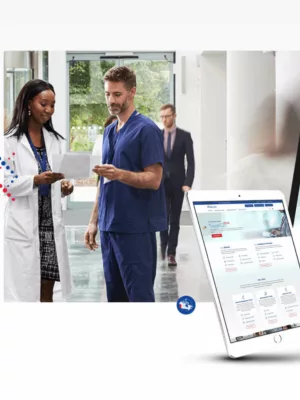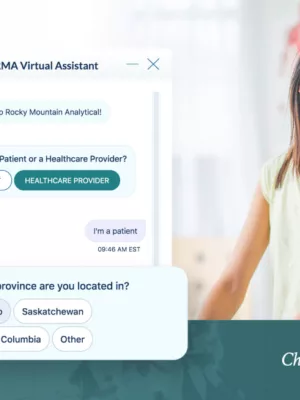
Healthcare is rapidly adopting digital transformation, with 93% of physicians considering digital health solutions as an advantage for patient care. This urges medical organizations to launch applications for enhanced patient experience or as another communication channel. To maintain a competitive edge and offer quality user experience, healthcare organizations need to take an extra step - Quality Assurance. In this article, we will elaborate on the healthcare app QA specifics.
Why Is Quality Testing Applications in Healthcare Important?
With revenue in the healthcare software market expected to grow to $1,305 Billion by 2030, every healthcare app needs to be secure, flexible, and user-friendly. Here are three major reasons why you must thoroughly test healthcare applications:
- Healthcare applications hold patients' private data, which should be secured and properly used according to local regulations. A major data breach may lead to huge penalties, lawsuits, extra expenditures on app updates, and loss of trust, while failure to meet data privacy standards can result in hefty fines. During the quality assurance phase, you ensure that the app is hack-proof and that the data are collected, processed, and stored by PIPEDA and HIPAA standards.
- A flawless performance is crucial for the patient experience. Constant bugs and crashes don’t only make private user data sensitive but also undermine seamless app journeys. Continuous quality testing allows you to check if the required performance metrics for all functional and non-functional requirements are met and keep your app up and running.
- Intuitive user experience may become a determining factor in whether the patient keeps using your app or not. Here, usability testing ensures the user journey considers all patient’s needs, whether the layout is easy-to-navigate for all patient categories, including those suffering from blindness or other disabilities.
What Is the Difference Between Testing Apps in Healthcare and Other Businesses?
Application testing practices are the same across different fields except healthcare app testing. Healthcare application testing has specific challenges and requirements that need greater attention than any other field, in particular, regulatory compliance standards and data integrity:
- HIPAA
- PIPEDA
What Are the Most Common Problems Found During Healthcare Applications QA?
The most common issues include the following:
- Lack of compatibility with different devices
- Poor data collection, analysis, and security
- Performance failures, including crashes, functional errors, or slow loading speeds
- Non-intuitive user experience
- Lacking digital accessibility
- Language barriers and a bad global experience
How to Test a Healthcare Application
Here are seven commonly-used steps to take during a healthcare application QA.
- Test Planning. The quality assurance team considers all the application requirements and draws a test plan with detailed documentation, including strategies, resources, deliverables, and goals.
- Technical Requirements Testing. The QA team studies the requirements to find any ambiguities to be removed. All the requirements must be complete and consistent with maintaining quality.
- Test Case Design. After studying the requirements, the test plan is confirmed, and a test case is designed.
- Functional Testing. All app functionalities are tested to detect bugs corresponding to the expected results.
- Non-Functional Testing. If the application provides stable results without any critical functional bugs, the testing team proceeds to non-functional testing. This phase tests usability, performance, security, reliability, and other non-functional requirements. Specific attention is devoted to penetration and accessibility testing. The former ensures your security, while the latter - proper UX for all users.
- Regression Testing. Developers resolve any errors in the prior steps, so it becomes necessary to check that those edits are successful and have not created any additional issues. It is done through regression testing to ensure the perfect functionality of the app.
- Reporting. The final stage for each test iteration is providing a report containing information about all the testing techniques and their outcomes. Reporting helps decide whether the app is market ready or if it still needs improvements.
Who Should Healthcare Companies Consider for App Testing Tasks?
Selecting a software development company with solid QA practices allows for seamless quality testing and the delivery of consistent results. A reliable partner can not only set up continuous QA, bridging the development and operational initiatives, but also offers sufficient resources and tools to ensure your healthcare app delivers.
With a solid experience in healthcare application development and quality testing, Convergine consistently approaches QA tasks. Our team sets up continuous quality testing processes and collaborates with development and operational teams. This allows us to ensure that your app is flawless, user-friendly, and scalable at every development stage.
Summing Up
Your healthcare application must fulfill all its requirements to keep up with the digital transformation of the healthcare industry. With thorough testing and quality assurance procedures, your healthcare application can be fit in terms of functionality, usability, and security. As a result, you will get a new efficient touchpoint with your patients that may boost acquisition and retention rates, delivering added value and increasing your revenue.
















